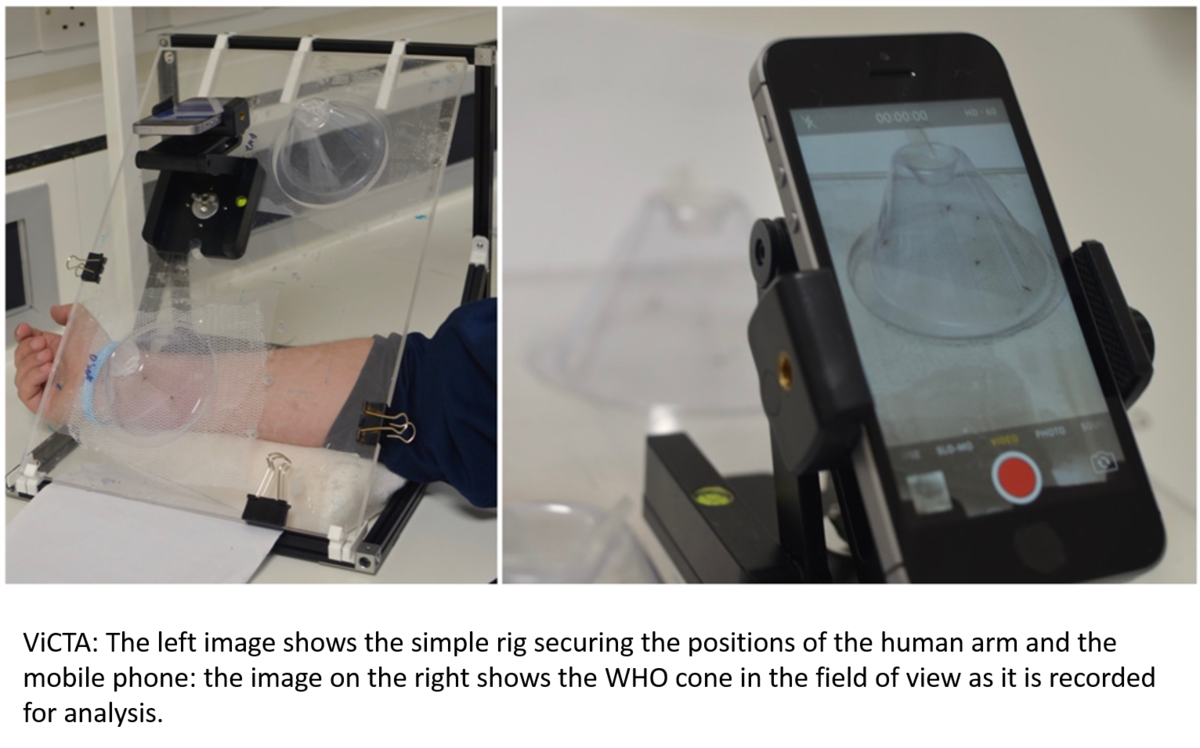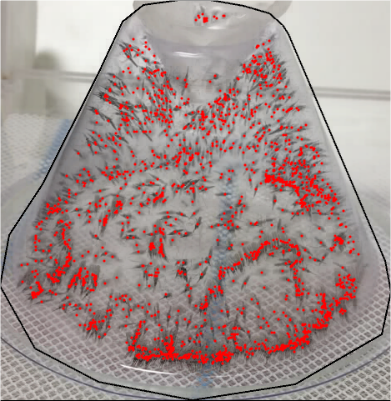The video cone test and ViCTA analysis
The WHO cone test is a widely used test for evaluating the efficacy of insecticidal netting. The test is simple and quick to perform, but the only two outputs are knockdown at 60 minutes and mortality at 24 hours. Clearly, these scores are important, but they don’t tell us whether the observed mortality is due solely to lethality of the insecticide on the net or whether other factors, e.g. excito-repellency or contact-irritancy, may provoke behavioural changes that could significantly affect the observed results.
To get more data from the WHO cone test, we developed the video cone test, a WHO cone test with two simple modifications: adding a host attractant in the form of a human arm placed behind the net and recording the test using a smartphone:

Composite images of activity allow qualitative comparisons of mosquito movements. The smartphone videos are analysed two ways: first by a process called scan sampling, where the video is paused at five second intervals and the positions (in flight, in contact with the net or in contact with the cone) of each of the five mosquitoes are recorded for semi-automated analysis by ViCTA (Video Cone Test Analysis). ViCTA is a piece of bespoke software developed at LSTM which captures the activity of each mosquito during the test as it responds to the net and the host.

This activity is analysed in several ways:
- Total activity plots compare behaviours between different mosquito strains during exposure to different types of bednet treatments
- Regional activity gives indications of irritancy and/or repellency of different materials
- Evolution of activity over time: a measure of the lag time between exposure and any detectable behavioural response e.g. differentiation of chemical treatments that become irritant after the first minute or two of exposure,compared to chemistries that are instantly irritant upon contact.
Figure shows detected mosquito movement by the ViCTA system during the WHO Cone Assay
